The museum will be closed Thursday, January 1 for New Year's Day. We will reopen Friday, January 2.
SciGirls Explore STEM Careers at NHM
The group was thrilled to take tours of the Nature Gardens and our expansive collections, meet our friendly staff, and learn about working at museums.
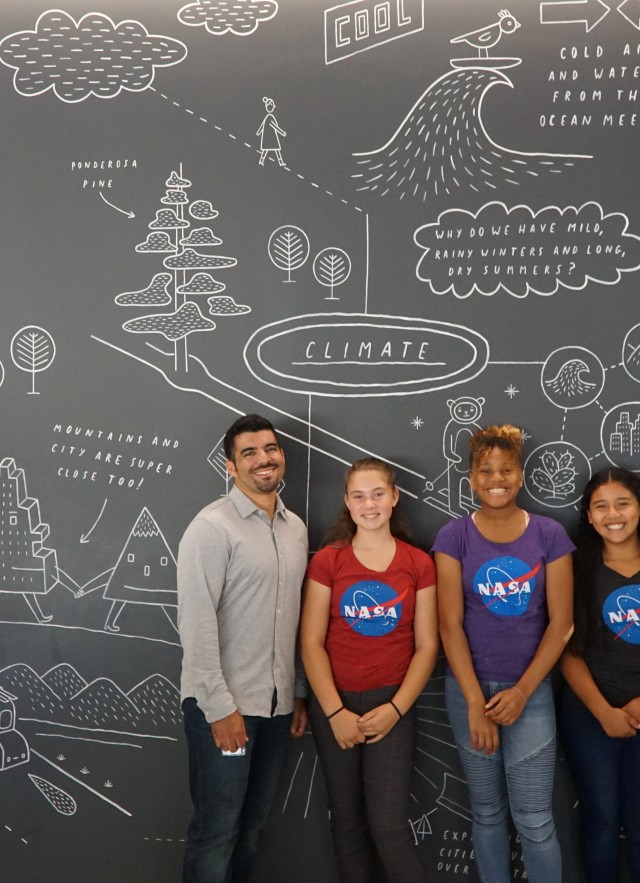
PBS SciGirls Get a Glimpse into STEM Career Opportunities at NHMLA and Beyond
Encouraging more diverse future generations of scientists and museum professionals while becoming more relevant to the local community, are at the top of NHMLAC's current priority list. What better way to work toward these goals but to partner with SciGirls, a PBS show that highlights fun and impactful ways female tweens can get involved in STEM (Science, Technology, and Math) activities. The SciGirls team reached out to NHMLAC and NASA’s Jet Propulsion Laboratory (JPL) about a project involving remote sensors that combines community science, urban nature exploration, and computer programming. Lila Higgins, Senior Manager of Community Science, pitched the idea of the girls working with me and JPL NASA engineer, Janelle Wellons, to build and program a camera trap that can be replicated by other community scientists.The SciGirls producers recruited three very talented girls, Rihighna, Karen, and Trinity, from the Girls Academic Leadership Academy (GALA) in the Mid City neighborhood of Los Angeles, following a very competitive audition process. I introduced them to how wildlife biologists use camera traps to study elusive nocturnal species and how these cameras with built in motion-sensors can even be used in the city to make important discoveries, such as the discovery of P-22, the Griffith Park mountain lion.

PBS SciGirls
SciGirls rest by the Nature Gardens pond after learning about how our camera traps monitor nocturnal wildlife that roam throughout our gardens.
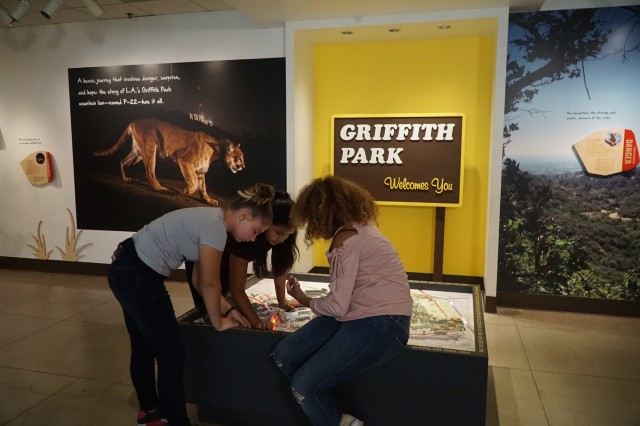
Maiz Connolly
SciGirls explore P-22's territory in P-22 exhibit.
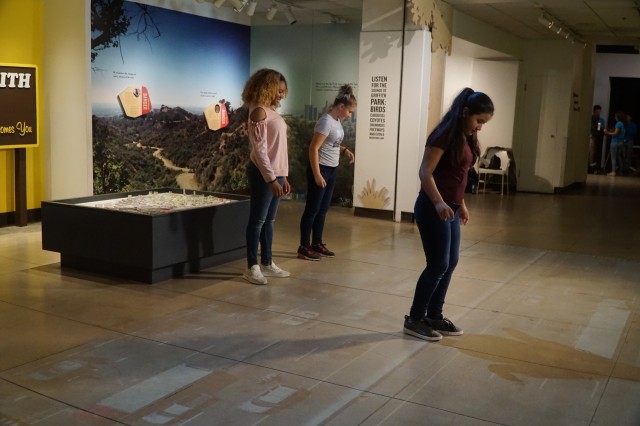
Maiz Connolly
SciGirls try to cross freeway traffic like P-22.
1 of 1
SciGirls rest by the Nature Gardens pond after learning about how our camera traps monitor nocturnal wildlife that roam throughout our gardens.
PBS SciGirls
SciGirls explore P-22's territory in P-22 exhibit.
Maiz Connolly
SciGirls try to cross freeway traffic like P-22.
Maiz Connolly
They also visited Janelle at JPL to learn how she programs robots and radiometers to measure the surface temperature on the moon among other exciting projects. After being inspired by the unexpected discovery of P-22 and Janelle’s space exploration, they worked with Janelle and me to build a camera trap that other young community members could use to explore nocturnal wildlife in their own neighborhoods.
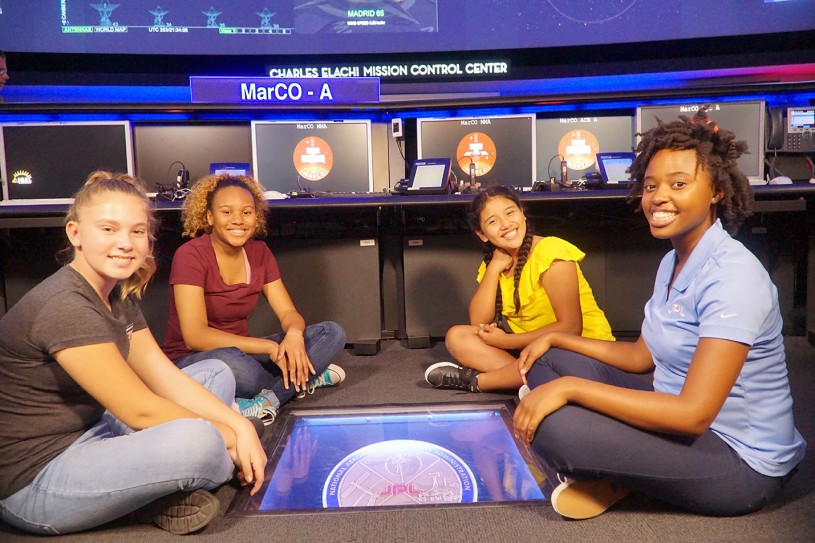
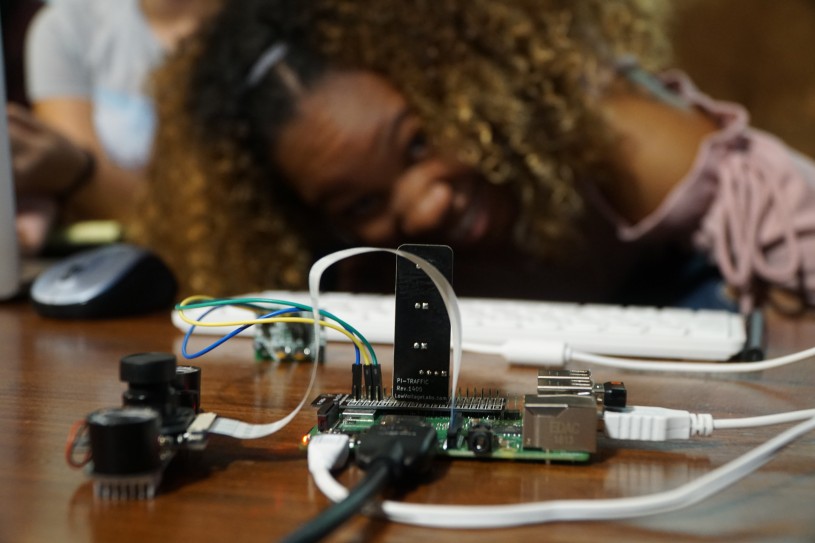
The end goal was to build a functional camera trap with household items and Raspberry Pi programming software, exposing urban youth to computer programming while encouraging urban nature exploration via a new website. The SciGirls proudly revealed their final product in our Museum’s Nature Lab exhibit. Please check out the episode by streaming it on PBS Kids app or watching it on the website when it premieres on December 26.
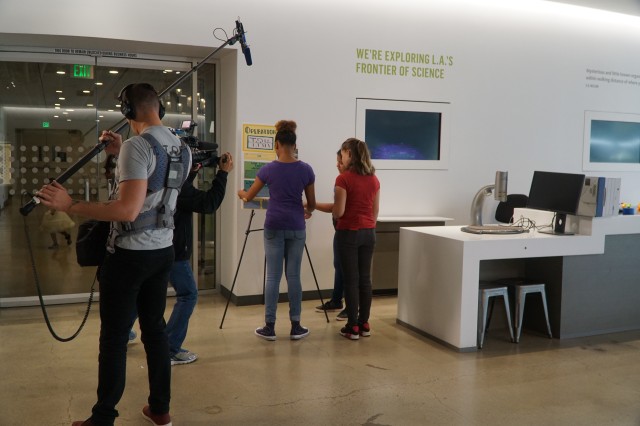
SciGirls prepare outreach material for public reveal of their camera trap prototype.
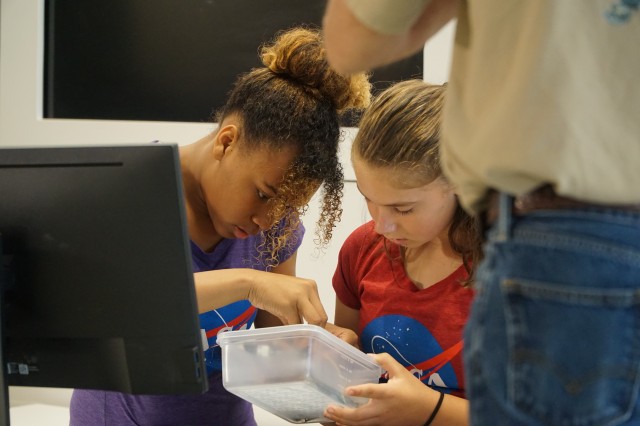
PBS SciGirls
SciGirls prepare their homemade camera trap for a live demo in the NHM Nature Lab exhibit.

PBS SciGirls
SciGirls showcase their online tutorial and project website to friends and family in the Nature Lab.
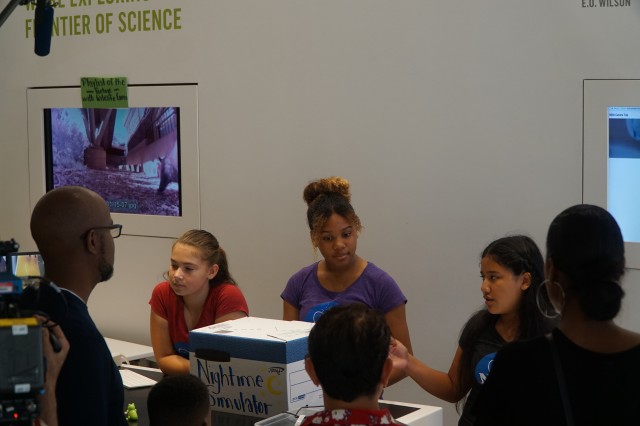
PBS SciGirls
SciGirls explain the technology behind their project to visitors.
1 of 1
SciGirls prepare outreach material for public reveal of their camera trap prototype.
SciGirls prepare their homemade camera trap for a live demo in the NHM Nature Lab exhibit.
PBS SciGirls
SciGirls showcase their online tutorial and project website to friends and family in the Nature Lab.
PBS SciGirls
SciGirls explain the technology behind their project to visitors.
PBS SciGirls
Spoiler Alert: After some fun troubleshooting and trial and error, the project was a success. For me, the surprise was how inspiring the experience was for me. I was so moved by the SciGirls’ perseverance and curiosity, that we invited them to return to the Museum to meet some of our female museum professionals to introduce them to the diverse people and departments that make NHM special.
My female co-workers jumped at the opportunity to meet with the SciGirls, who had the opportunity to meet with Lila Higgins (Manager, Community Science), Lisa Gonzalez (Collections Manager, Entomology), Jann Vendetti (Curator, Malacology), and Allison Shultz (Curator, Ornithology). Families of the SciGirls were also invited in order to increase the impact of their visit. The tours of our Nature Gardens and collections were filled with screams of excitement and oohs and aahs as our friendly staff repeatedly blew the visitors’ minds by sharing our expansive collections, while also making their jobs seem accessible by sharing their career paths. Below are some photos from their visit:

Maiz Connolly
SciGirls begin their museum tour with Lila and Miguel who showed them how to find and photograph wildlife in the Nature Gardens.
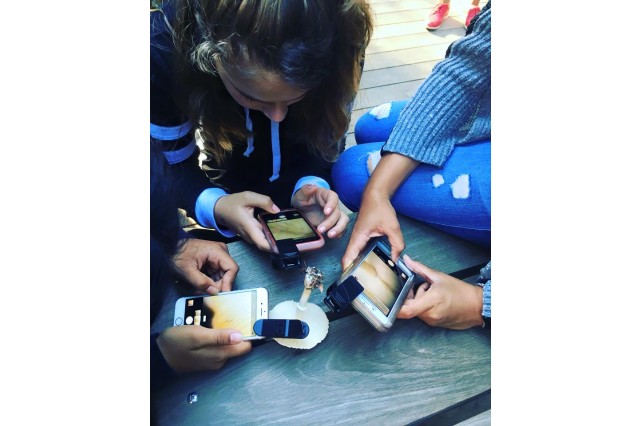
Maiz Connolly
SciGirls practiced macro photography on a mushroom they found in the Nature Gardens.
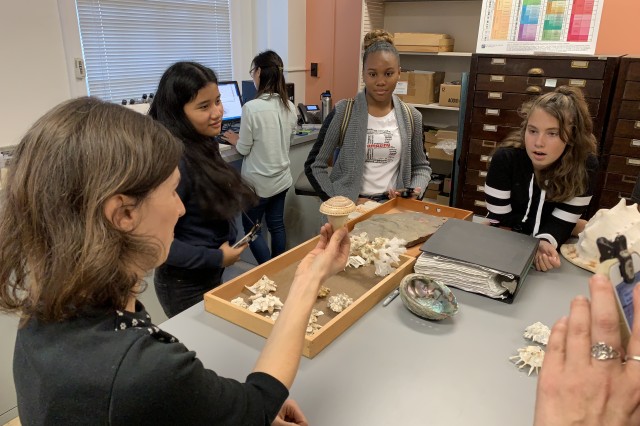
Maiz Connolly
Jann Vendetti provides SciGirls with an awe-inspiring tour of the Malacology collections.
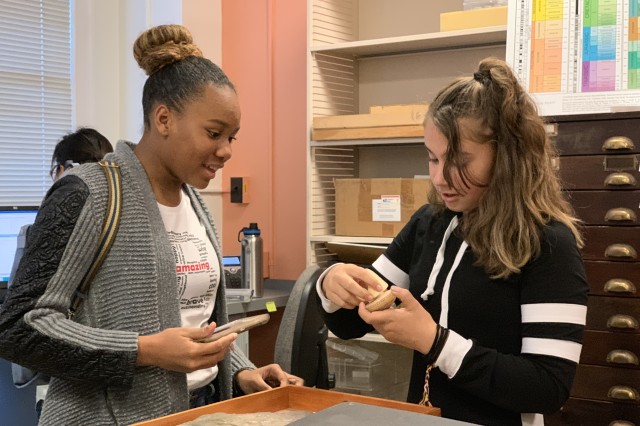
Maiz Connolly
SciGirls get a hands on lesson about evolution in the Malacology collection.
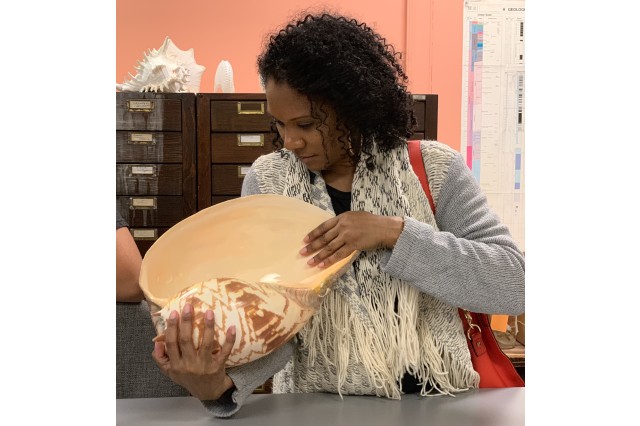
Rihighna's mother Erlinda gets a close up look at a large shell that is part of the Malacology collection.
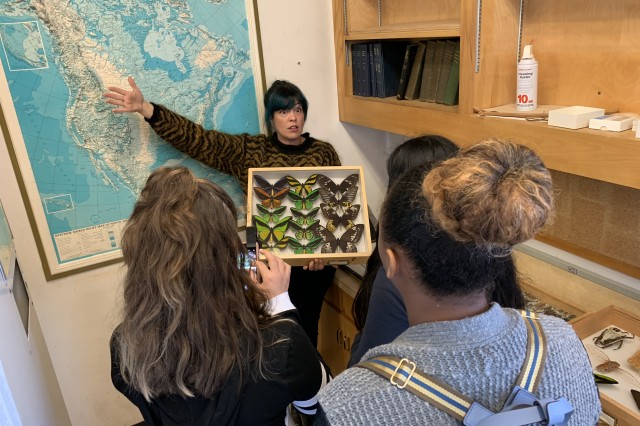
Maiz Connolly
Lisa Gonzalez introduces SciGirls to the Entomology collection.
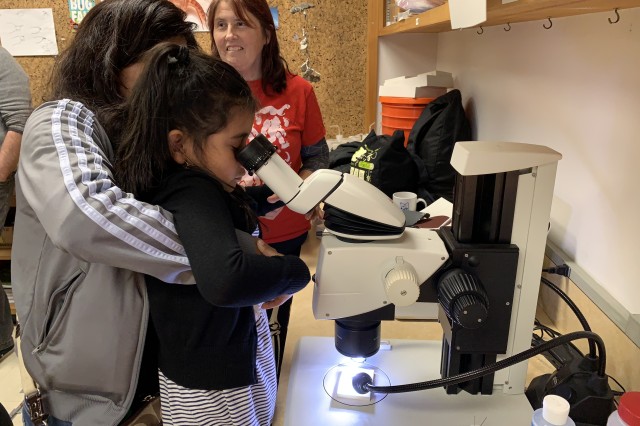
Maiz Connolly
Karen's younger sister, Kayleen, gets a closer look at a small phorid fly.
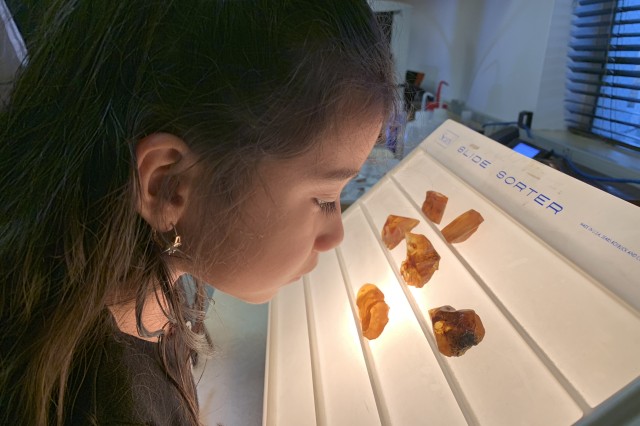
Maiz Connolly
Kayleen gets a close look at insects encased in amber.
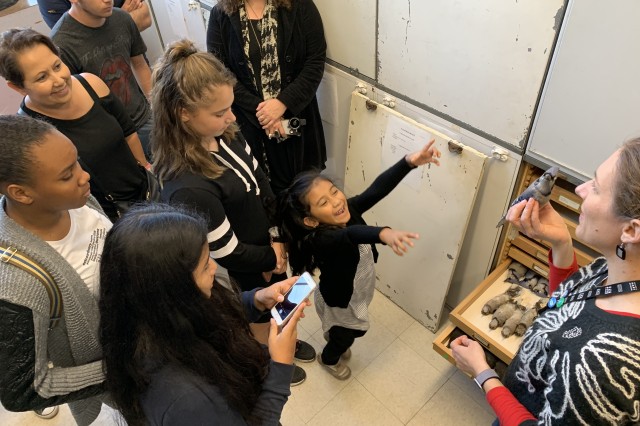
Maiz Connolly
Allison Shultz introduces SciGirls and their families to the Ornithology collection.

Maiz Connolly
Allison demonstrates her research on bird feathers.
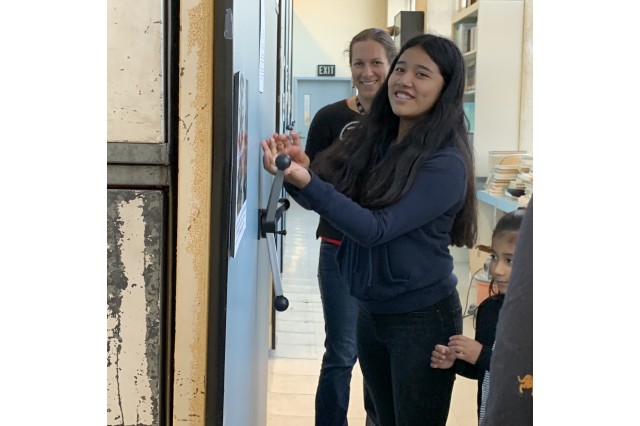
Maiz Connolly
Karen moves the shelves to explore more bird specimens.
1 of 1
SciGirls begin their museum tour with Lila and Miguel who showed them how to find and photograph wildlife in the Nature Gardens.
Maiz Connolly
SciGirls practiced macro photography on a mushroom they found in the Nature Gardens.
Maiz Connolly
Jann Vendetti provides SciGirls with an awe-inspiring tour of the Malacology collections.
Maiz Connolly
SciGirls get a hands on lesson about evolution in the Malacology collection.
Maiz Connolly
Rihighna's mother Erlinda gets a close up look at a large shell that is part of the Malacology collection.
Lisa Gonzalez introduces SciGirls to the Entomology collection.
Maiz Connolly
Karen's younger sister, Kayleen, gets a closer look at a small phorid fly.
Maiz Connolly
Kayleen gets a close look at insects encased in amber.
Maiz Connolly
Allison Shultz introduces SciGirls and their families to the Ornithology collection.
Maiz Connolly
Allison demonstrates her research on bird feathers.
Maiz Connolly
Karen moves the shelves to explore more bird specimens.
Maiz Connolly
Following their visit, I interviewed the SciGirls about their first experiences doing filmed science communication and their visits to the Natural History Museum and NASA.
Miguel Ordeñana: Can you tell us about how you got involved in the SciGirls Programs?
Rihighna: Due to the STEM school I go to, the school’s parent organization found the opportunity for students to audition. As soon as I heard about it I instantly wanted to do it.
MO: What was the selection process and casting for the show like, and what did you enjoy most about it?
Trinity: The selection process and casting was very intense for me because I haven’t really done any interviews before SciGirls. The thing I enjoyed during the selection process was making a maze and programming the robots for them to go through.
MO: What did your family think about you getting involved in SciGirls and in science in general?
Karen: My family was excited for me, especially my sister because she watches SciGirls on TV and she always screams when she sees that the show is on.
MO: What were some of your favorite moments while filming SciGirls at the Natural History Museum? Rihighna: My favorite part of filming at the Natural History Museum was getting go “behind the scenes” at the Museum and seeing our project come to life.
MO: Has your perception of nature before SciGirls changed, and how?
Karen: My perception of nature before SciGirls was that it was beautiful, but I always wondered what there was in nature that I didn’t get to see. The way it changed is that I was able to know more about the nature I wasn’t seeing.
MO: What was your perception of natural history museums, nature, and museum professionals before meeting educators and scientists at the Museum? How has it changed?
Karen: My perception of the Natural History Museum was that it was all dinosaurs but after going through that experience I learned that there is so much more to the Natural History Museum than that. Also with the museum professionals, I would always see what was on the outside until I got to meet the professionals. I actually got to learn what happens, I never thought that much work would be happening while we were enjoying our time at the Museum.
MO: Have you experienced any barriers while studying or considering a career in science as an underrepresented minority in STEM? Do you share these same barriers with peers your age?
Karen: I would tell my peers that I might want to be a forensic scientist, and they would scrunch their noses and say that it is a disgusting thing to do work on, but I thought otherwise. Then biochemist people would say that it is a really hard job and I should maybe try something easier.
MO: Any tips for other young girls interested in trying out science communication?
Trinity: Always follow your dreams. If you want to be an Astronaut be an Astronaut, just know that you have to work hard for it and that it will have many challenges.
MO: Is your family supportive of you pursuing a career in science? Why?
Rihighna: My family is very supportive of me pursuing a career in science because there are a lot less African American females in science, and women who pursue science are very successful in life.
MO: What is next for you as you begin the transition to high school and beyond?
Trinity: The next step for me as I transition into high school is that I would like to do AP courses and I’m especially interested in AP Bio and BioMed.
MO: How can parents help get their teens, specifically young girls, to get more involved in science and nature exploration?
Rihighna: They can expose them to science and nature at an early age, it’s something to grow up with making it more familiar and fun.
MO: Are there any questions you wished I had asked? Do you have anything else you'd like to say? Trinity: I don’t have any more questions but I would like to remind everyone that whatever your dreams are, you have to push yourself to get to that point because if you just sit back waiting for something to happen, you will be waiting forever.
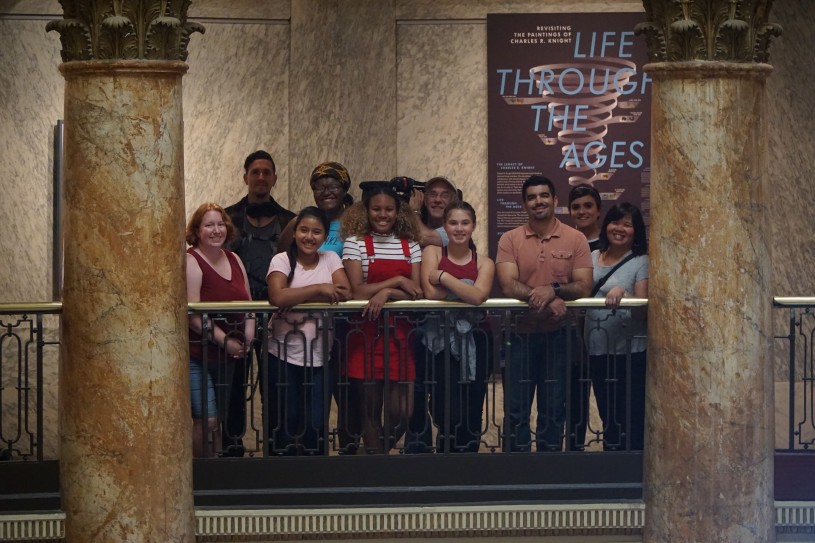
After having some time to reflect and read their responses, it became clear why I was so inspired by them and eager to introduce them to my talented female colleagues: Representation matters! I am always surrounded by such inspiring female museum professionals that it was easy for me to envision clear and concrete future opportunities for these young girls within the museum field, but most middle school girls have not had this experience. As a scientist of color, I know how important it is to be able to see someone that looks like you as a professional, especially within a field that is traditionally male-dominated and has pitiful representation from people of color. For me, having the chance to meet even a couple individuals who shared similar backgrounds or at least similar obstacles provided me with enough hope to keep me going. Now, as the father of a daughter, I have become hyper-aware of the need for more diverse female trailblazers to create easier paths for the following generation of SciGirls.